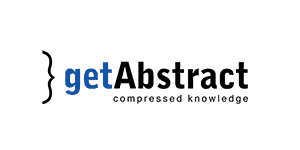Find Your Why
A Practical Guide for Discovering Purpose for You and Your Team
Author: Simon Sinek & David Mead

No available rating

👍GetAbstract Rating: 8/10

GetAbstract Summary Preview
Three General Steps
The authors first present a general overview of the three-step process for finding your Why. This three-step process is 1) gather stories and share them; 2) identify themes; and 3) draft and refine a Why Statement. “At its core, the Why is an origin story,” the authors explain. “By looking to our past and teasing out the most significant threads — the experiences we’ve had, the people we’ve been influenced by, the lives we’ve touched and the highs and lows we’ve faced — we can identify patterns.” The authors recommend gathering, at a minimum, 10 of the most specific and impactful memories you can think of, choosing five or six of the memories that made the biggest difference in your life, and then sharing these selected memories in as much detail as possible.
Themes Lead to the Statement
“As you pan for your stories and share them,” the authors continue, “themes will start to emerge, insights about yourself and your team that you may never have expressed before.” Eventually, one or two of those themes, they write, will stand out as the most important in defining who you are. Those one or two themes become the foundation of the Why Statement, which according to the authors takes the following form: TO_ SO THAT_.
The first blank identifies the contribution that you make in the lives of others, and the second the impact of that contribution. Sinek’s Why Statement, for example, is, “To inspire people to do the things that inspire them so that, together, we can change the world.”
A Second Set of Eyes and Ears
The three steps just described are at the heart of the finding your Why process. In subsequent chapters, the authors lay out the detailed how-to steps, which can range from choosing the right meeting spaces to different story-gathering methods, required for individuals and groups to find their Why. They characterize groups as “tribes,” which they define as “any group of people who come together around a common set of values and beliefs.”
About The Author & Review
About The Author:
Simon Sinek also wrote Start with Why and presented a companion TED Talk. David Mead and Peter Docker, consultants at Sinek Partners LLC, teach organizations worldwide how to put Sinek’s vision to work. For further information on using this process, see FindYourWhy.com and Sinek’s TedTalk.
Review:
Simon Sinek wrote this companion to his earlier book Start with Why with consultants David Mead and Peter Docker. Their advice shines when they describe the process of discovering your “Why” and your firm’s “Tribal Why.” They tell you how sustainable, successful firms can communicate a shared purpose, and how employees can communicate their individual and collective vision based on the impact of their work. Sinek explains how to run a Why session to engage your employees by discovering their shared purpose, and he offers help in understanding your life and your purpose as well.
Everyone deserves meaningful and fulfilling work.
Sinek, Mead, and Docker’s personal and organizational Whys arise from their belief that everyone and every company should enjoy purposeful, meaningful work. They argue that fulfilling work matters critically to employee motivation and organizational success. On a personal level, they believe that for you to engage with your work and your firm over the long term, you must learn and embrace the elements of its work which inspire you.Even if your job already energizes and engages you, the authors urge you to examine the aspects of your work and your life that give you fulfillment. They assert that knowing what gets you going and why helps you find work, teammates, and an organization that aligns with your purpose. Knowing your “Why” gives you a road map to every meaningful decision in your career and life.
Moreover, knowing your Why will make you a more convincing person. The authors advise you not to confuse fulfillment with happiness. You might feel happy after you reach a goal, make a sale, or get a raise. But happiness tends to come and go. When you align your work with your purpose – your Why – you can experience lasting, consistent fulfillment.

